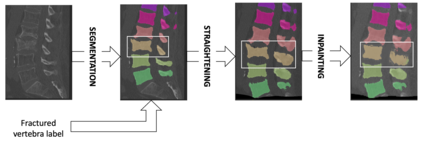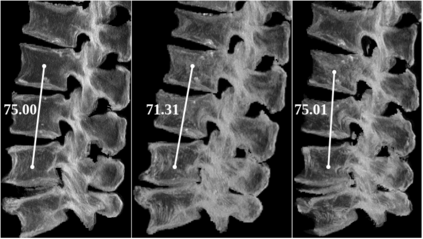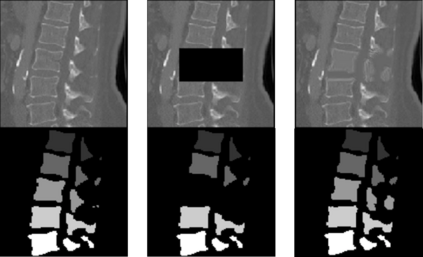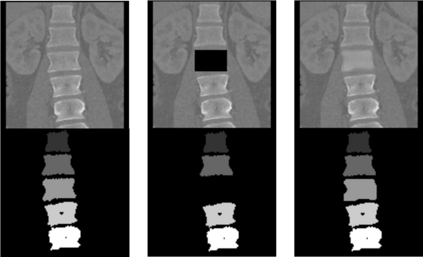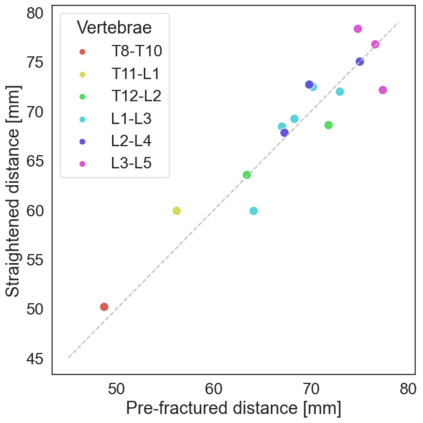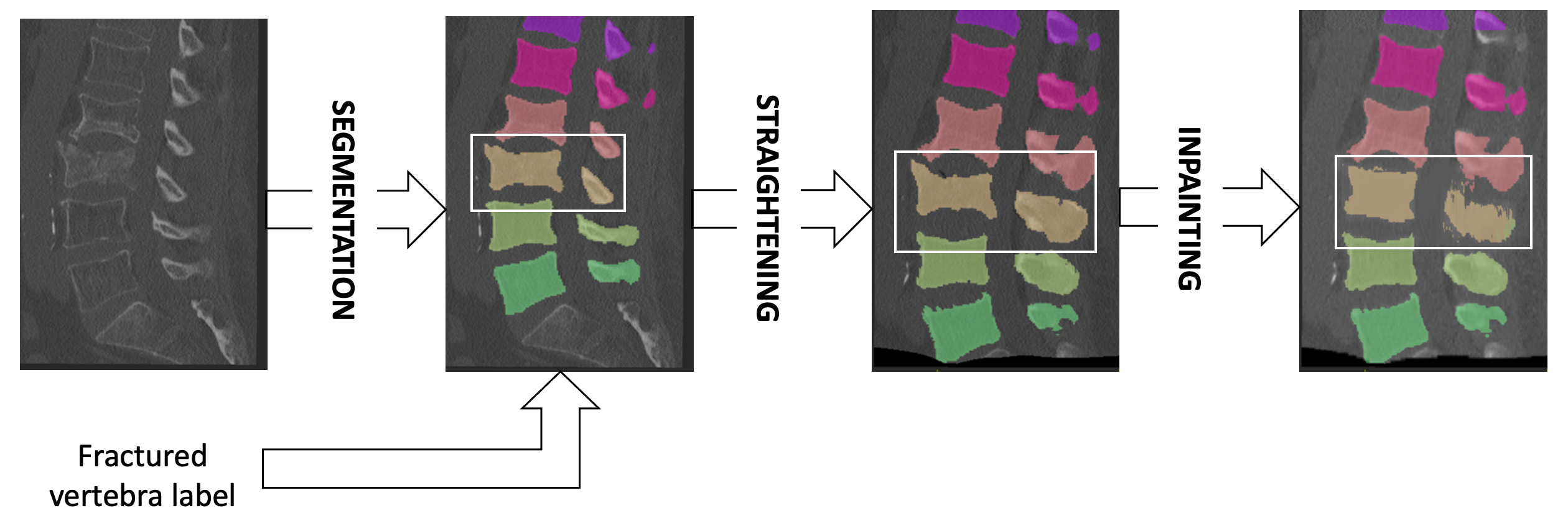Symptomatic spinal vertebral compression fractures (VCFs) often require osteoplasty treatment. A cement-like material is injected into the bone to stabilize the fracture, restore the vertebral body height and alleviate pain. Leakage is a common complication and may occur due to too much cement being injected. In this work, we propose an automated patient-specific framework that can allow physicians to calculate an upper bound of cement for the injection and estimate the optimal outcome of osteoplasty. The framework uses the patient CT scan and the fractured vertebra label to build a virtual healthy spine using a high-level approach. Firstly, the fractured spine is segmented with a three-step Convolution Neural Network (CNN) architecture. Next, a per-vertebra rigid registration to a healthy spine atlas restores its curvature. Finally, a GAN-based inpainting approach replaces the fractured vertebra with an estimation of its original shape. Based on this outcome, we then estimate the maximum amount of bone cement for injection. We evaluate our framework by comparing the virtual vertebrae volumes of ten patients to their healthy equivalent and report an average error of 3.88$\pm$7.63\%. The presented pipeline offers a first approach to a personalized automatic high-level framework for planning osteoplasty procedures.
翻译:在这项工作中,我们建议一个针对病人的自动框架,允许医生计算注射水泥的上层框,并估计骨质板压的最佳结果。这个框架使用病人CT扫描和骨折脊椎标志,用高层次的方法构建一个虚拟健康的脊椎。首先,骨折脊椎与三步进化神经网络(CNN)结构分割。接下来,对健康的脊椎图的每垂直硬化登记可以恢复其曲度。最后,基于GAN的浸渍法用其原始形状的估计取代骨折的脊椎。根据这个结果,我们随后估计了用于注射的骨质水泥的最大数量。我们用直径为3的直径计。我们用直径框架来比较个人骨质水泥的平均数量。我们用直径框架对直径为3的直径。我们用直径框架对直到直径的直径做了一个直径图。我们用直径的直径框架进行了对比,用直径的直径图对直径做了对比。

